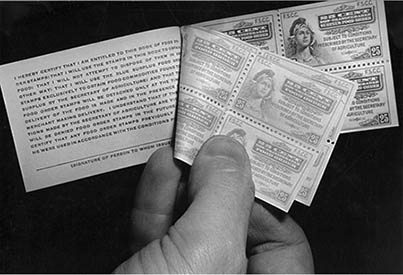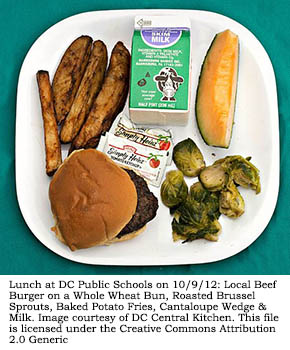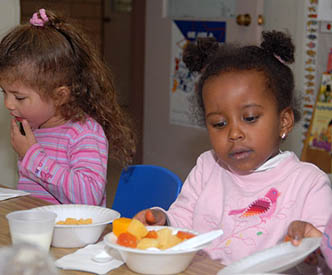Learn
Federal food programs started after the Depression in the 1930s when the government purchased surplus farm products and gave them to poor Americans. After World War II, when farm surplus became smaller, the government began giving cash to schools to pay for the lunch of lower-income students. In 1946, the National School Lunch Act was initiated to "safeguard the health and well-being of the nation's children."
The main resources for government assistance in the areas of nutrition and family wellness are sponsored by the USDA. They can be found online or in the government blue pages in your phone book. They are titled: Food and Nutrition Services. They can also found at the USDA's Food and Nutrition Information Center.

 Women, Infants, and Children (WIC)
Women, Infants, and Children (WIC)
People refer to this as the "WIC program." This organization serves to bring good nutrition and protect the health of pregnant mothers or mothers with children up to the age of five. They provide health services ( "check-ups" ) to identify nutrition risk. The organization will also provide nutritious foods to supplement their diet. WIC will give them information on healthy eating and referrals to other health care services.
Some of the medical risks the counselors look for in the WIC program are anemia, previous problems with pregnancies, insufficient weight gain, or failure to meet dietary guidelines. The women that come in for their check ups are assigned to a nutritionist to review their progress and provide feedback on their progress, as well as the progress of their children.
The program is available in all 50 States, 34 Indian Tribal Organizations, American Samoa, District of Columbia, Guam, Commonwealth Islands of the Northern Marianas, Puerto Rico, and the Virgin Islands.

Supplemental Nutrition Assistance Program
SNAP serves as the first line of defense against hunger. SNAP gives vouchers (in the form of EBT cards) to low-income families to buy nutritious foods from authorized food stores. The program encourages purchases following the dietary guidelines for Americans set by the department of health and human services. They especially encourage the consumption of plentyof fruits, vegetables, whole grains, and other nutritious foods. See the Eligible Food Items list for more information.

Food stamps used in 1941. Photo courtesy of National Archives and Records Administration. View larger version.
There is also an initiative within SNAP called MyPlate for My Family: SNAP Nutrition Education which supplies nutrition education materials to help women with children ages 2 through 18 make smart food choices.

School Lunch Program
This is a government-sponsored program. It provides nutritionally balanced, low-cost or free lunches to more than 30 million children each school day. School districts and independent schools that choose to take part in the lunch program get cash subsidies and donated commodities from the U.S. Department of Agriculture (USDA) for each meal they serve. In return, they must serve lunches that meet federal requirements and they must offer free or reduced price lunches to eligible children. School food authorities can also be reimbursed for snacks served to children through age 18 in afterschool educational or enrichment programs.
 The Healthy, Hunger Free Kids Act of 2010 directed USDA to update the NSLP's meal pattern and nutrition standards based on the latest Dietary Guidelines for Americans.
The Healthy, Hunger Free Kids Act of 2010 directed USDA to update the NSLP's meal pattern and nutrition standards based on the latest Dietary Guidelines for Americans.
The new meal pattern went into effect at the beginning of 2012-13 school year, and increases the availability of fruits, vegetables, and whole grains in the school menu. New dietary specifications set specific calorie limits to ensure age-appropriate meals for grades K, 6, 8, and 9-12. Other meal enhancements include gradual reductions in the sodium content of the meals.
While school lunches must meet federal meal requirements, decisions about what specific foods to serve and how they are prepared are made by each school district.

Disaster Relief
The Disaster Relief Program provides food to shelters. Often after a natural disaster, people will gather in mass shelters,churches, large storage facilities, or hospitals. The Department of Food and Nutrition Services will send food, packages, and emergency food benefits.

Child and Adult Care Food Program (CACFP)
 This program helps to make day care more affordable to low-income families. The CACFP provides benefits so that around 3 million children in day care receive nutritious meals and snacks The program also provides meals and snacks to adults who live in adult day care centers. And the CACFP provides meals to children living in shelters and those participating in certain after-school care programs.
This program helps to make day care more affordable to low-income families. The CACFP provides benefits so that around 3 million children in day care receive nutritious meals and snacks The program also provides meals and snacks to adults who live in adult day care centers. And the CACFP provides meals to children living in shelters and those participating in certain after-school care programs.
Youngsters at the Higher Horizons Day Care Center in Bailey Crossroads, VA., receive healthy food and snacks on October 25, 2006 under the U.S. Department of Agriculture (USDA) Food Nutrition Service's (FNS) Child and Adult Care Food Program (CACFP) and Head Start program. CACFP plays a vital role in improving the quality of day care for children and elderly adults by making care more affordable for many low-income families. Each day, 3.2 million children receive nutritious meals and snacks through CACFP. USDA photo by Ken Hammond. This file is licensed under the Creative Commons Attribution 2.0 Generic
 Students that live in areas of low-income can receive free or reduced rate breakfast and lunch. The food is usually distributed in public schools during the summer months.
Students that live in areas of low-income can receive free or reduced rate breakfast and lunch. The food is usually distributed in public schools during the summer months.